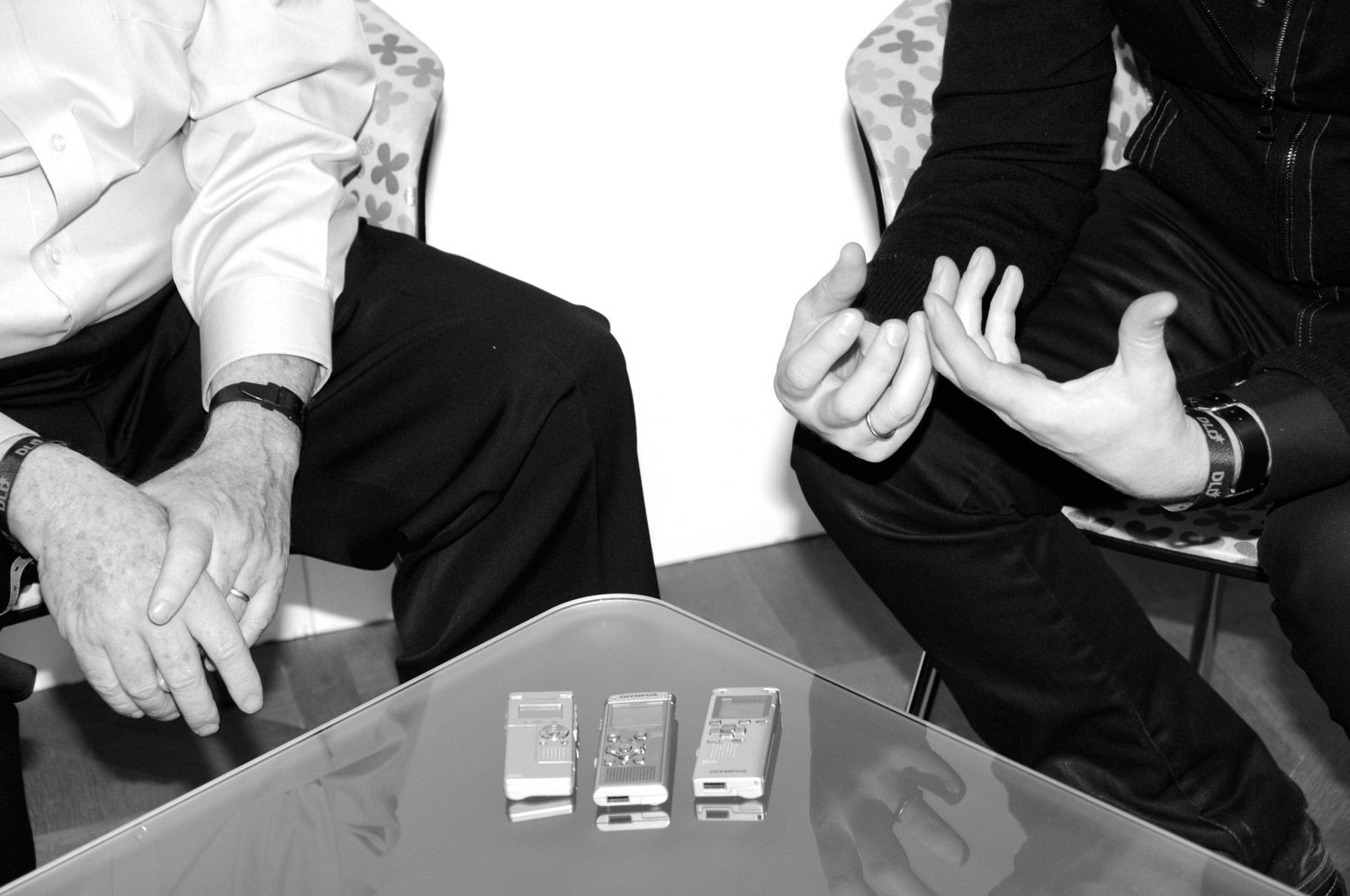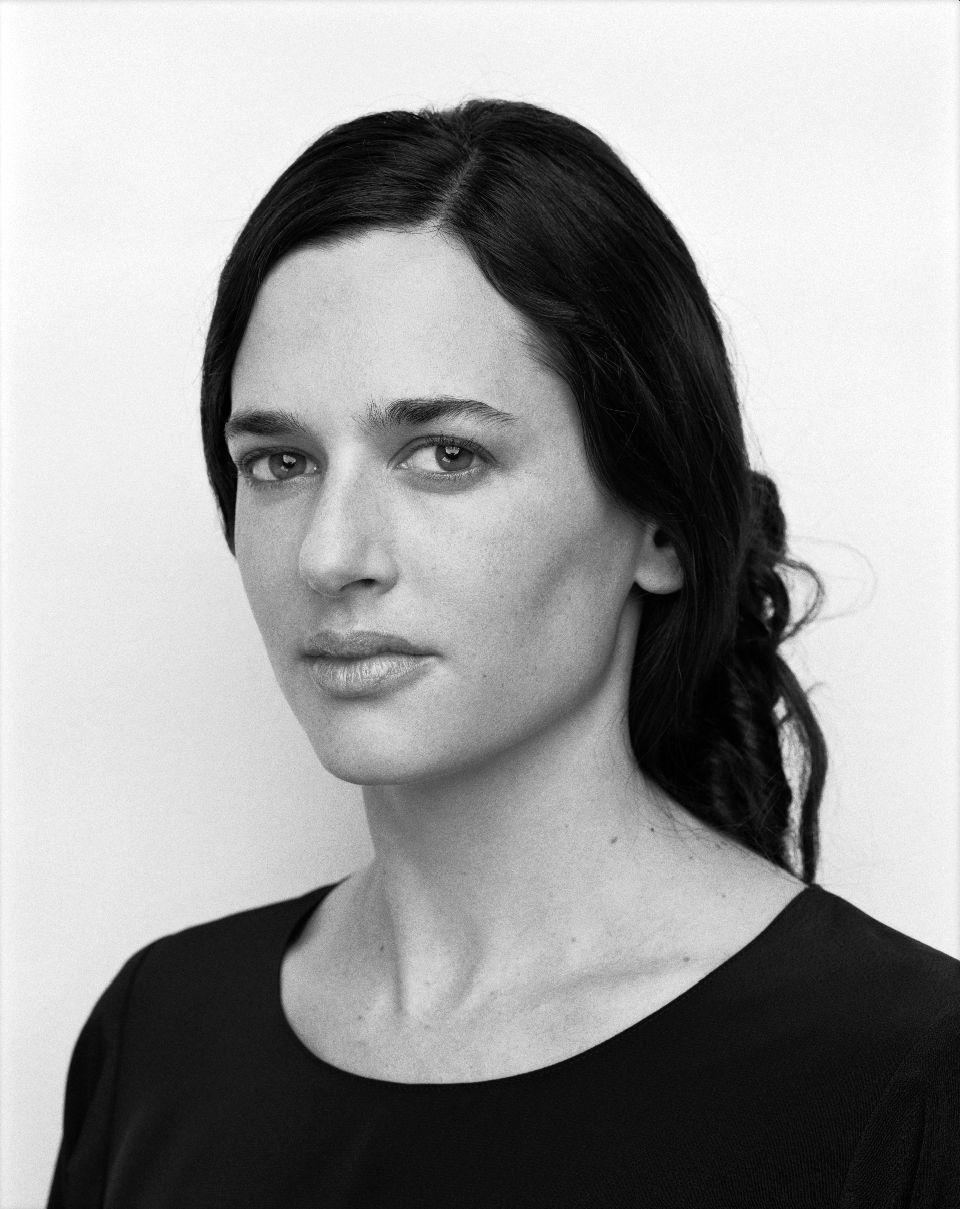“It’s Important to Be Visionary Rather Than Reactionary”: Artist Hank Willis Thomas’s Aesthetics of Mass Action
|Francesca Gavin
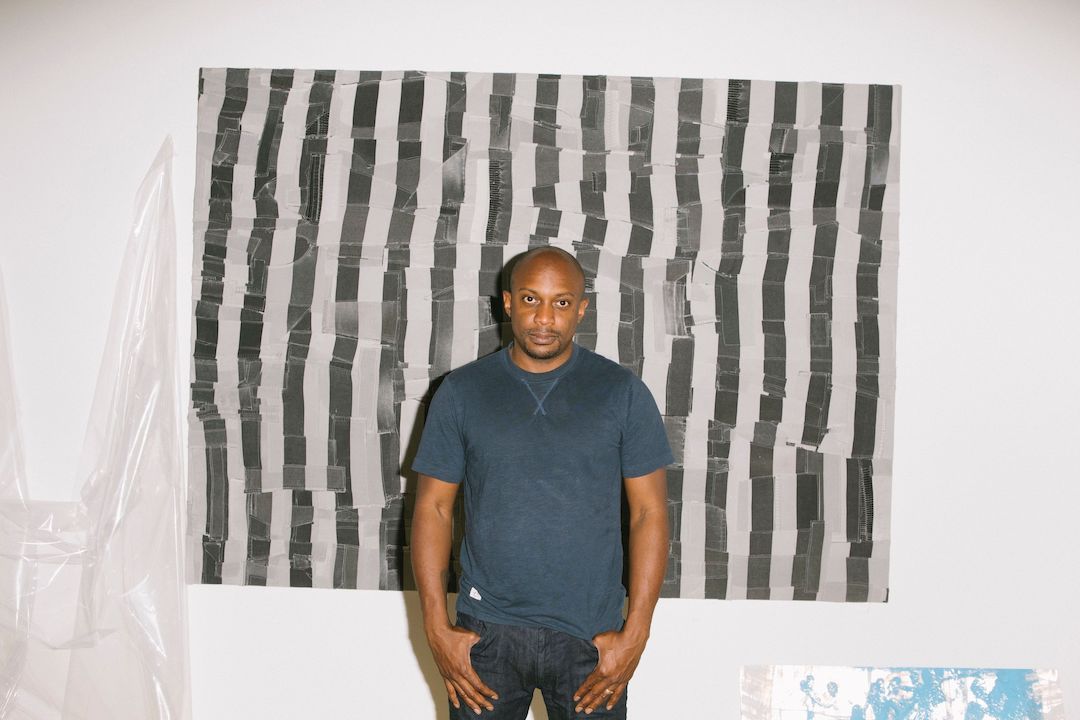
Last week, the far-right shut down the east German city of Chemnitz for three days, with violent anti-migrant protests. Last year, white nationalists and neo-nazis in the United States marched in Charlottesville, VA. It is 2018, and there is “hate in the streets.”
There are also people and institutions working against it. The Equal Justice Initiative, a Montgomery, AL, organization challenging racial inequality, economic injustice, and the American criminal justice system, opened the National Memorial for Peace and Justice back in April. Permanently installed on its grounds is Raise Up, a sculpture by Hank Willis Thomas that takes aim at apartheid and systematized police violence – issues that feature throughout the artist’s politicized oeuvre. Willis Thomas is profiled in the latest edition of Roderick Stanley’s GOOD TROUBLE magazine, a broadsheet covering the intersection of art and activism. Read the feature here.
From his concealed images of protest to his sculpture at the National Memorial for Peace and Justice in Montgomery, Alabama, HANK WILLIS THOMAS is one of America’s most important contemporary artists, delving into identity, race and consumer culture. He tells Francesca Gavin why he’s happy engaging with both the political and the personal.
The camera flash was invented to illuminate darkness. Flash grew out of experiments in the late 19th century involving explosive wires of magnesium, and from the 1920s onwards, flash bulbs became very popular with the press and police documenting events at night. That connection between illumination and exposure, news and documentation, speed and explosion, feeds into the work of American artist Hank Willis Thomas, whose work investigates representation and consumption of imagery, while unravelling our relationship to identity, race, protest, politics, advertising, commodification and the creation of history itself.
Willis Thomas’s most recent exhibition at New York’s Jack Shainman gallery is darkly lit. On the walls are works that appear like normal wall pieces, but the images are invisible or muted. The artist invites viewers to point their camera light or take a flash photograph of the works on retro-reflective material – and then the images break into clarity. Here, the revealed images are all of protests, largely from the 1960s. It is both a literal and metaphorical take on illumination.
“You are holding a light source from your specific point of view,” Willis Thomas says. “It illuminates wherever you look, and for me, that was an interesting device to use when I’m considering the notion of looking backwards, looking at history to find a way forwards that might be more productive than repeating patterns.”
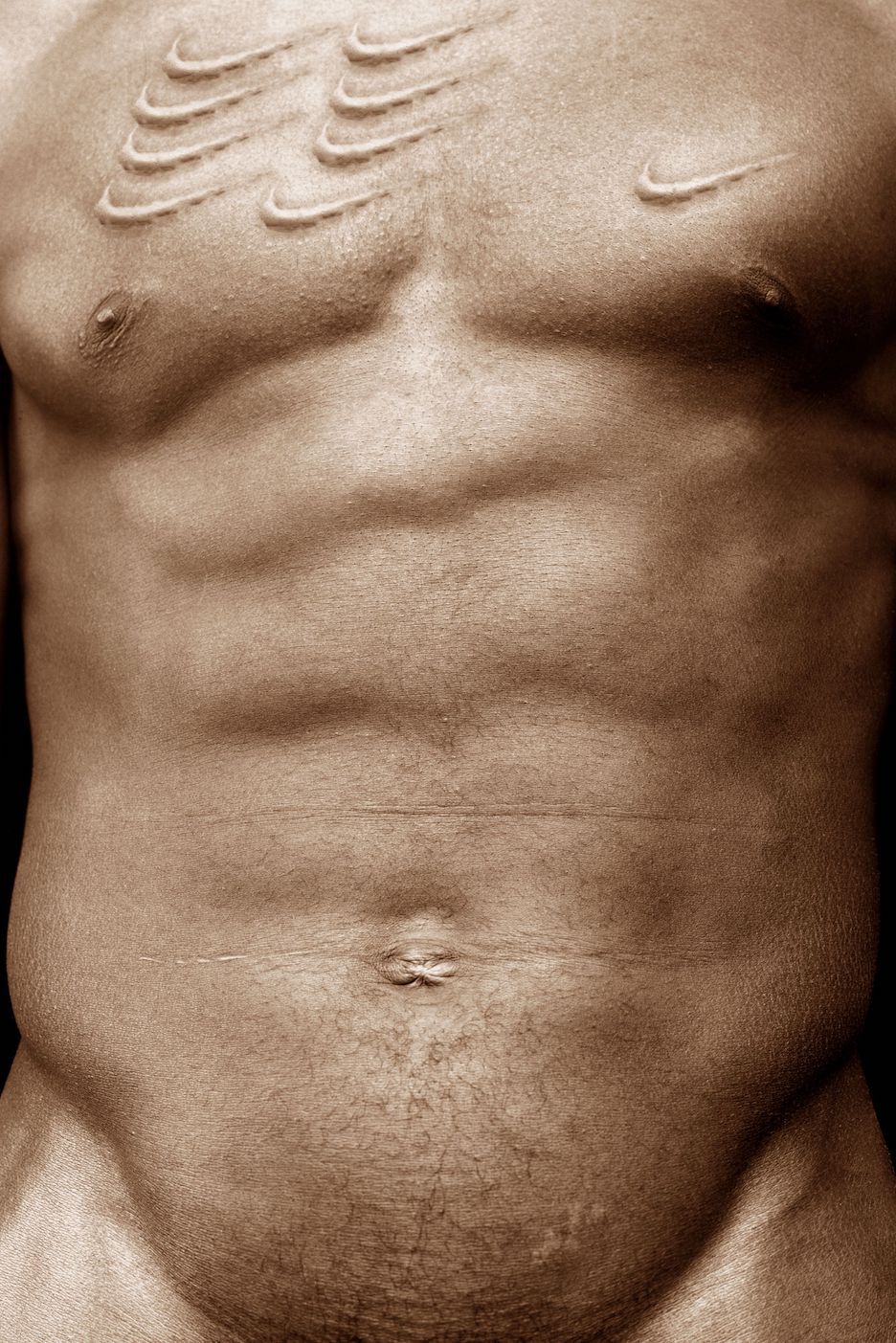
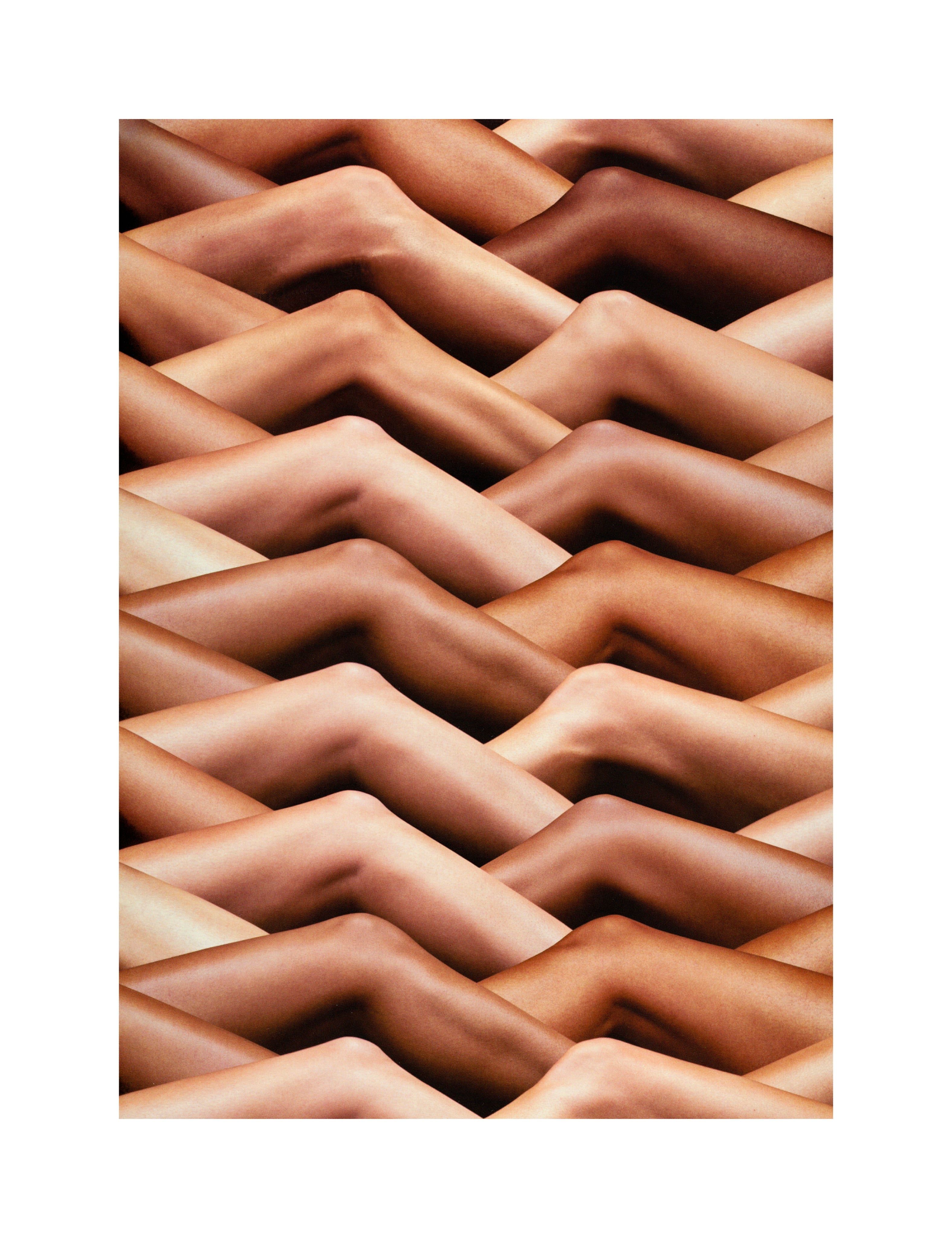
I believe there are more pictures taken in a single second than any of us can really make sense of in our entire lives. We are so overinundated with images that we can’t see them, in a way.
Hank Willis Thomas
Here, the entire focus is on protest in the 20th century, and the depicted activism is varied. Black Panthers, civil rights, anti-Vietnam protest – it is unclear of the exactness of each image. “There is a broader connection to the different movements,” Willis Thomas says. “Viewers might be able to make connections between these historical moments and movements that they might not otherwise make.”
Willis Thomas’s aesthetic echoes the graphic approaches of some of the big names of mid-century artists, people like Robert Rauschenberg, Andy Warhol and Franz Kline: “I started to think about ways I could make deeper, richer connections to art history.”
The aim was to implicate the artists in their historical moment into the greater conversation. “The work is definitely a (look at) the aesthetic of major protests,” he says, “but (it is) also a lesson in pop art and abstract expressionism.” His choice of artists to reference could be seen as classical male, white establishment choices, but as the artist points out: “So is history.”
Willis Thomas has exhibited widely, from the Studio Museum Harlem, to the Musée du quai Branly in Paris, Guggenheim Bilbao, to the Zeitz Museum of Contemporary Art Africa, Cape Town. Across his practice, which varies from sculptures of hands holding basketballs to mixed-media patchwork paintings, he is pulling apart how we consume imagery. As he puts it, “The process of looking is a political act. Seeing things that are not visible.” Sometimes, that means manipulating or reworking images in some way – creating new images out of the past. This is a methodology with a purpose.
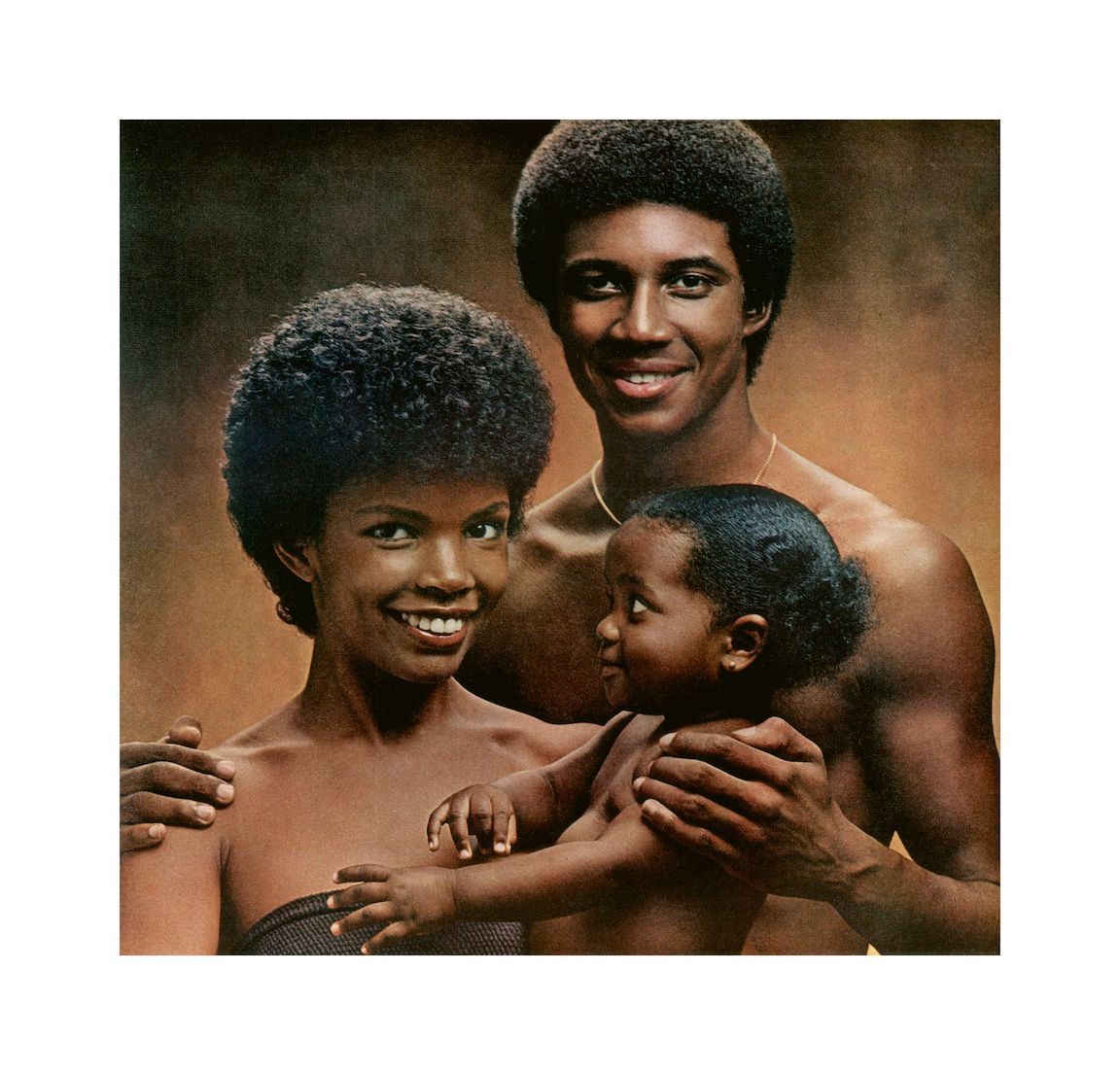
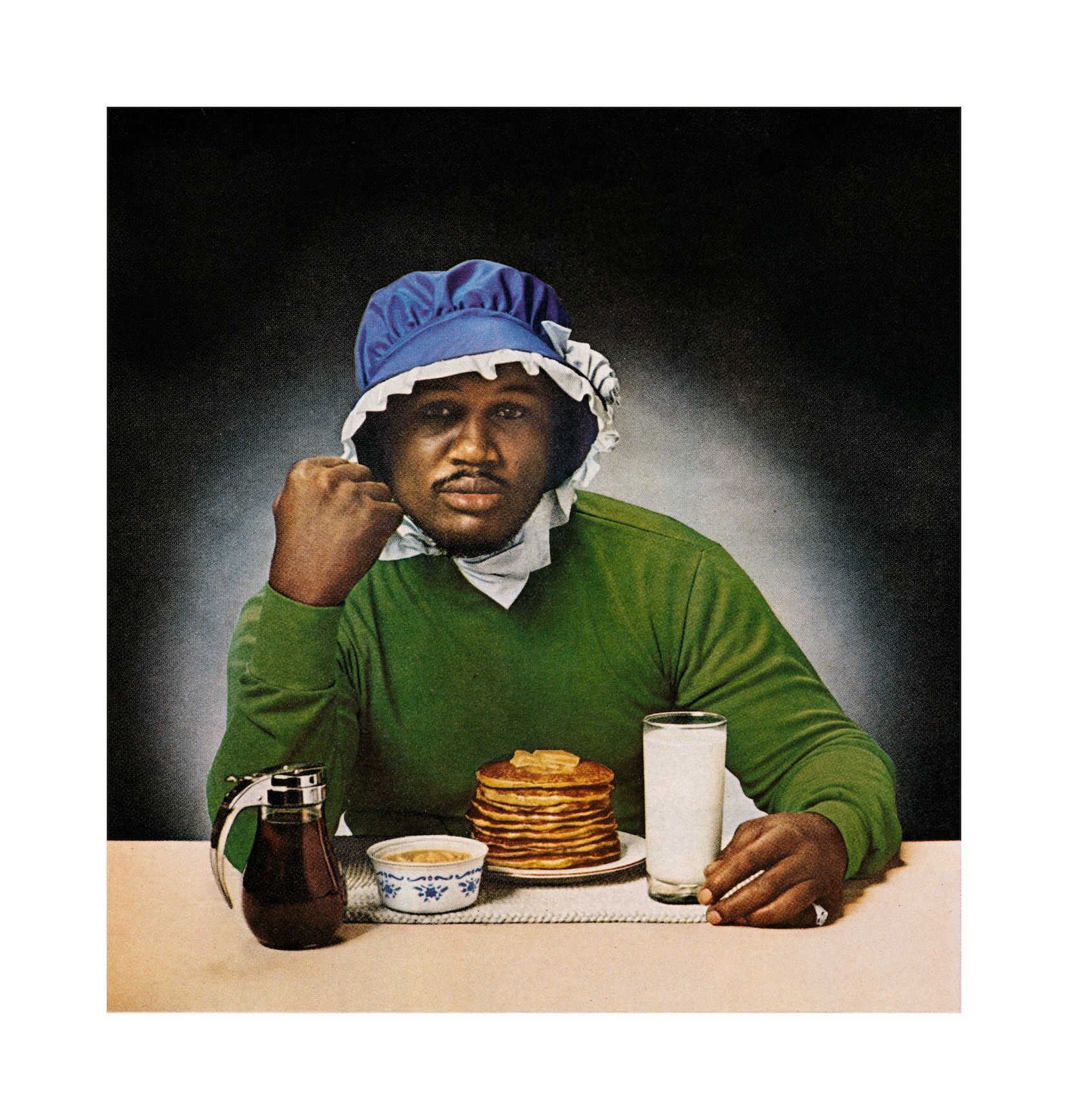
“I realised there’s maybe an opportunity and possibility for visual thinkers to help find ways to make and present images that we are vaguely familiar with – or are unfamiliar with – and find ways to present those in a new way that allows myself and viewers to really reconsider the past as well as the present. We’re so often told these grand narratives of who we are and how we came to be. What we choose to believe really dictates our notions of our society, and how we get along, who we don’t get along with, and how we resolve differences.”
Visual culture was an obvious choice of field for Willis Thomas, who came from a creative and intellectual background. His mother is a curator at the Schomburg Center for Research in Black Culture and also chair of the department of photography and imaging at the Tisch School of Arts in New York. He was surrounded by visual historical research throughout his life.
“Because of who my mother was, I just saw a different side of history, even though I might have been taught certain things at school,” he says. “I was always hyper-aware that there were other lenses that weren’t being focused on. I think as I grew older, I realised that there was a power of telling. That history is really a variation on storytelling. It’s not as much about what happened but what we can get people to believe happened, and what the effects of that is.”
One of Willis Thomas’s most famous projects removes the text and straplines from advertisements that included African diasporic models and subjects, in a project entitled Unbranded: Reflections in Black by Corporate America. The result is an archive of representation that at first just feels like professional images. The entirely commercial context of the originals takes time to register. As he puts it, “Advertising is so seductively blind.” He used the same approach to images of desire, beauty and the so-called ideal in a second series called Unbranded: A Century of White Women 1915-2015. The results force us to become aware of how our conception of norms is formed by capitalism.
Willis Thomas’s work is not just based around the cliche of the single artist genius. He has worked on a number of often collaborative projects that veer into activism. For him, working in a collective way, and with different mindsets, is a way of creating change.
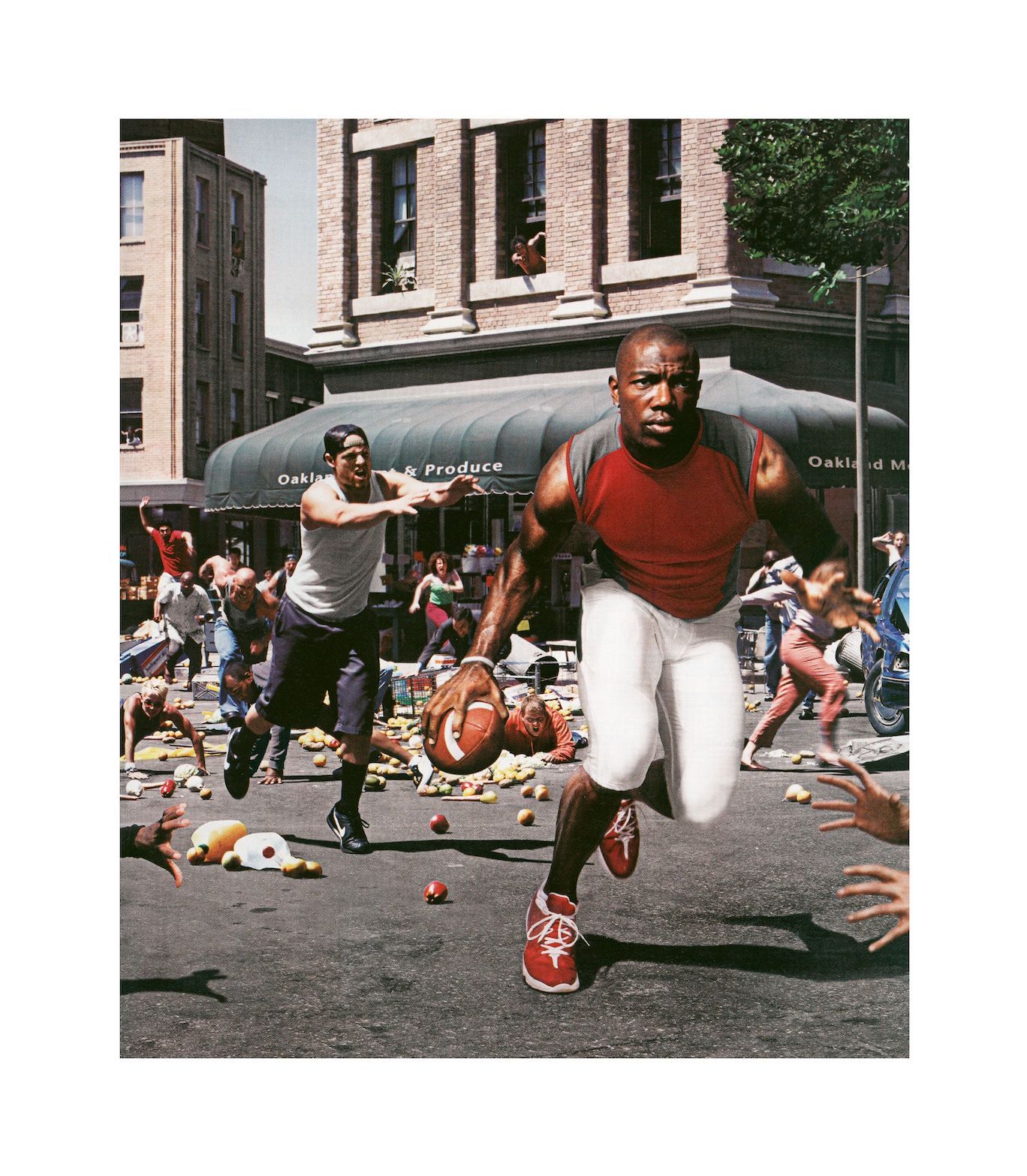
I always feel that it’s important to be visionary rather than reactionary. That’s really one of the amazing powers of art – that it can resonate and challenge us to reconsider what we value, what we think we know.
Hank Willis Thomas
Willis Thomas’s art-activist projects have included For Freedoms, a platform for direct action and civic engagement using art that he established with Eric Gottesman; Cause Collective, a group of artists creating work in public space that search to engage and shape society; and Into Action!, an exhibition and festival he co-curated to respond to current politics. “I feel very comfortable challenging or engaging and relating to the public space,” he says.
Willis Thomas was one of the artists to contribute to the National Memorial for Peace and Justice in Montgomery, Alabama, launched by the Equal Justice Initiative as a place for reflection on and memorial to the history of lynching and oppression. His sculpture, entitled ‘Raise Up’, depicts black figures made of bronze embedded in concrete, their hands raised above them, their faces entombed in concrete, or reaching to be lifted above. For him, it was “about salvation, about resurrection, thinking about fascism, baptism and protest”.
Not all of his works are narrative or figurative. Abstraction, text, and language also emerge with works based around phrases such as “All things being equal” and “Love over rules”. The last phrase was taken from the last audio footage Willis Thomas had of his cousin Songha Willis, who was murdered during a violent robbery in 2000.
“I think the personal is political, which is why so many people are drawn to artists,” he says. “Art is often dealing with your own fears, and we’re all human beings. Often, we’re able to connect or explore vicariously through someone else’s own exploration.
“I think that’s one of the great benefits of having the responsibility of being an artist. We’re all simultaneously teaching one another and learning from one another.”
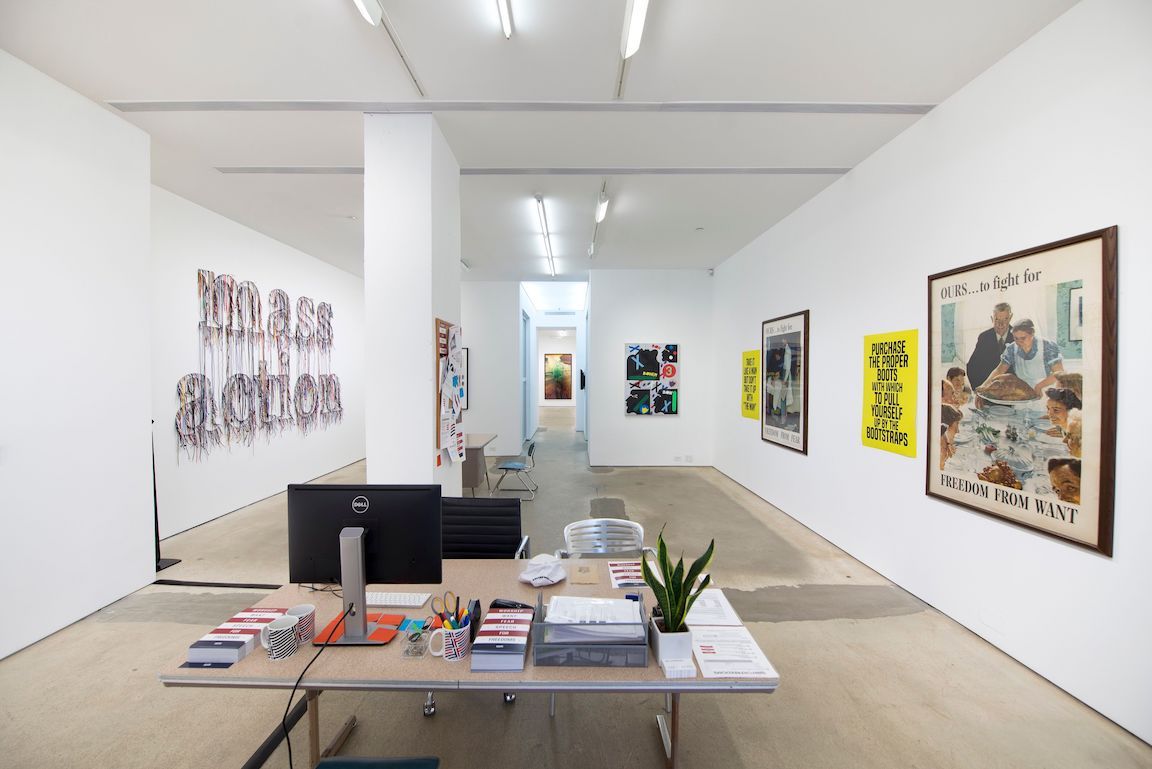
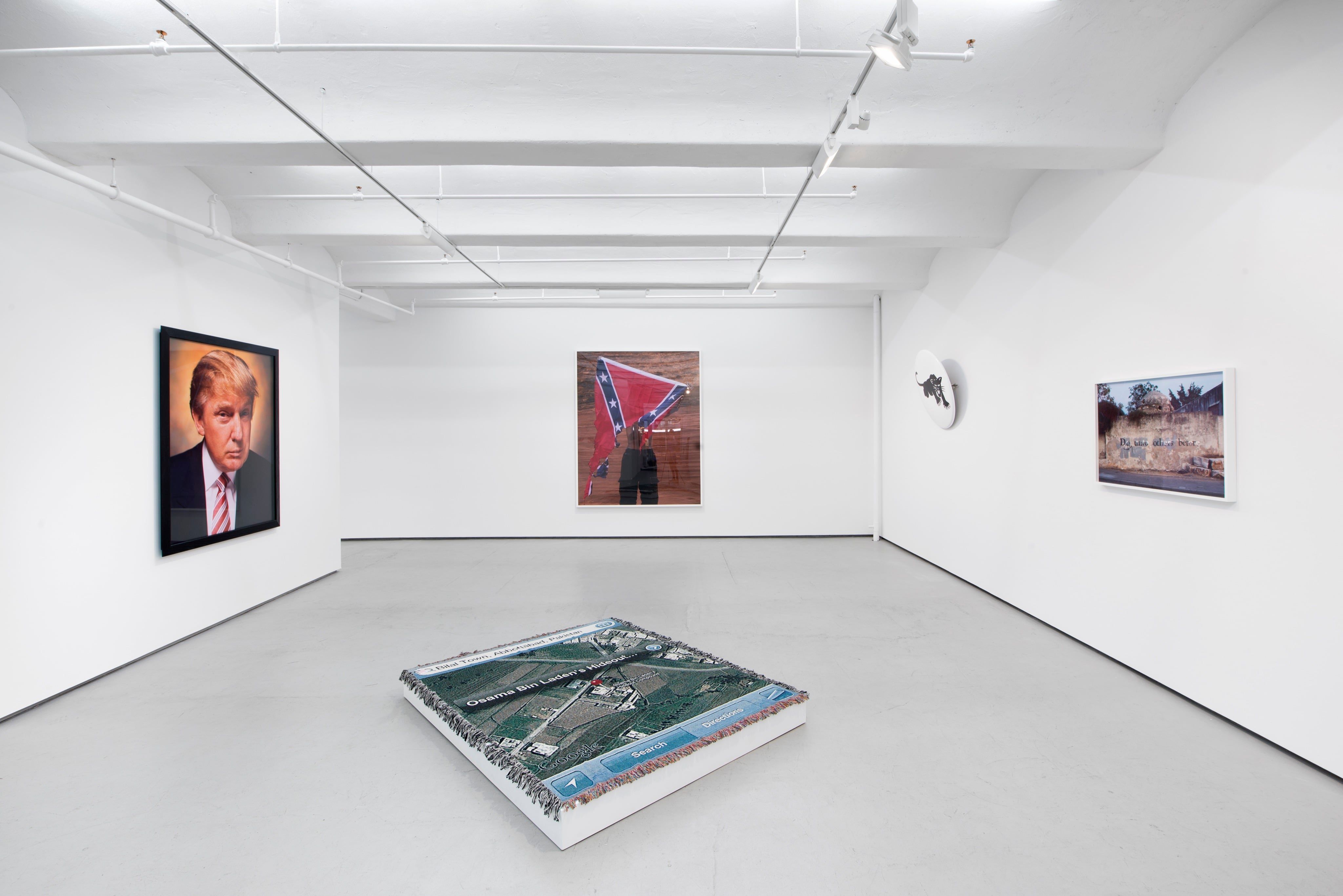
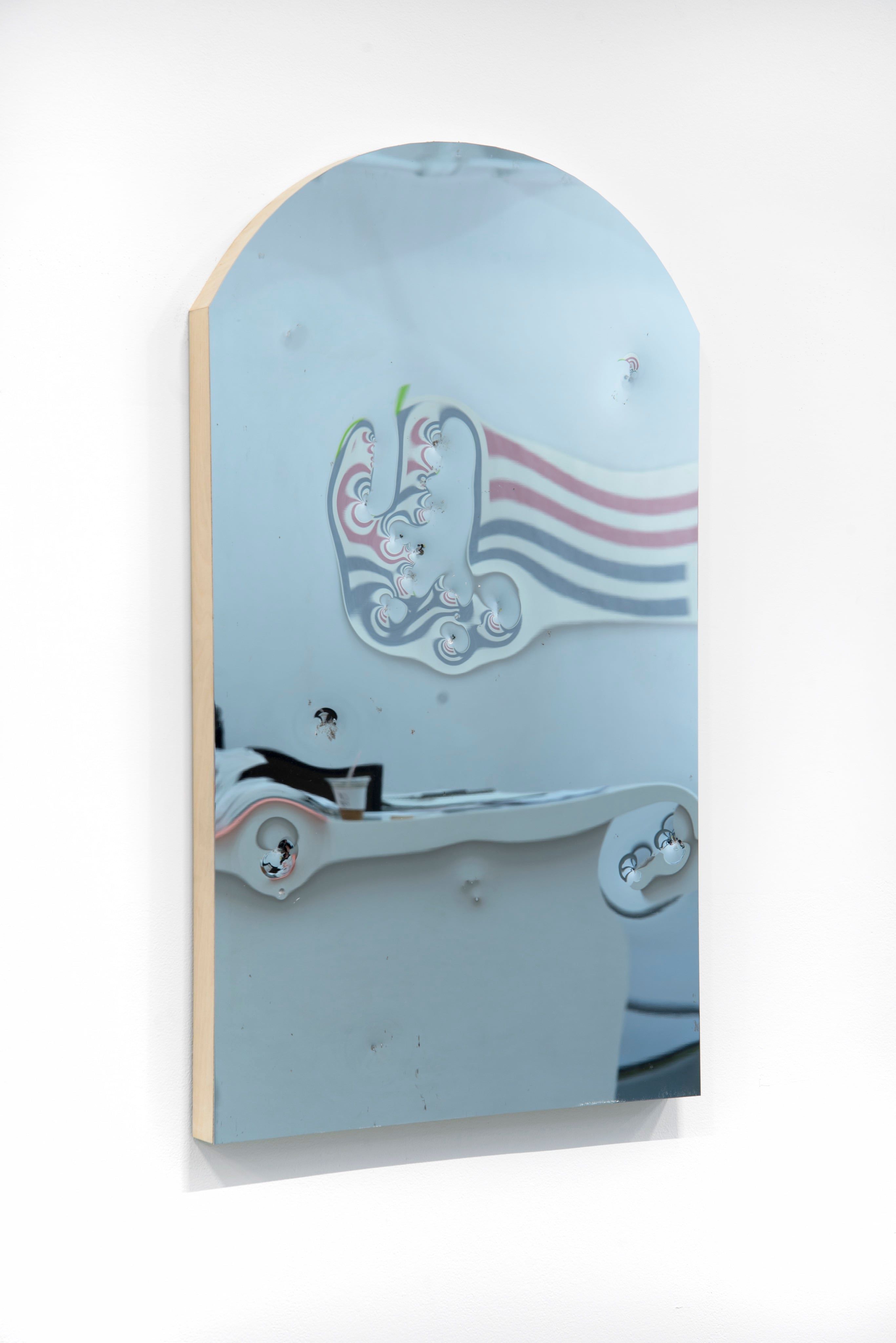
This interview is excerpted from Good Trouble Issue 22, the second issue of the annual newspaper about the intersection of arts and culture with protest and activism. The publication was created by Roderick Stanley, and designed by Richard Turley and Sophie Abady. Copies can be purchased directly here.
Credits
- Text: Francesca Gavin
- Portrait: Chris Shonting for Good Trouble
